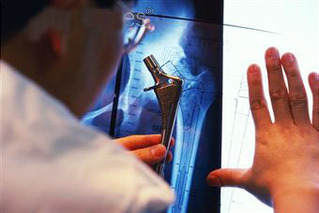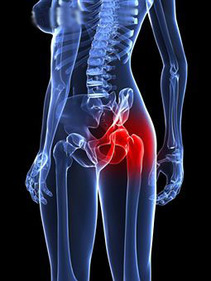
Patients with rheumatoid arthritis (RA) are prone of dying due to cardiac disease, the Science Daily reports, quoting findings from a recent study. However, "use of robotics in hip replacement surgery lowers margin of error".
The risk of cardiovascular disease among patients with RA is caused by disease-related inflammation as well as the risk factors which affect the general population, according to the latest study published in BioMed Central's open access journal Arthritis Research & Therapy. Treatment of arthritis with disease modifying anti-rheumatic drugs (DMARDs) also reduced the patient's risk of heart disease, the Science Daily says.
The findings formed part of a five-year-old study conducted among 400 patients with RA. Development of their ailment was measured by chemical markers of soreness and physical appearance. Treatment routines were closely supervised along with risk factors for heart disease, including weight, cholesterol levels, blood pressure, diabetes and smoking, according to the Science Daily.
After five years, 97 percent of the patients had been treated with DMARDs, dropping both the chemical markers of inflammation and the physical appearance of their arthritis. Patients were also looking after themselves better. Fewer patients were smokers and their BMI and blood pressure, had reduced (due in part to treatment for high blood pressure).
Analysis of patient data revealed that a new cardiovascular event such as heart disease, stroke or DVT could be predicted by intensity of their arthritis and by presence of diabetes, high blood pressure, and the level of triglycerides. Encouragingly treatment with DMARDs decreased the risk but COX-2 inhibitors appeared to predict a new event, Science Daily suggests.
Dr Wållberg-Jonsson from University Hospital, Umeå, in Sweden says that the swelling linked with RA raises the patients' risk of heart disease and other cardiovascular events. However it is possible to reduce this risk in a two-pronged attack by treating both the inflammation and traditional risk factors for heart disease, the Science Daily says.
RA is considered as a chronic disease, which means a disease that is impossible to cure. The patient may feel warm to the touch and might notice a decreased range of motion, as well as inflammation, swelling and pain in the areas around the affected joints, according to the Arthritis.org website.
Although, evidence shows that early diagnosis and aggressive treatment to put the disease into remission is the best means of avoiding joint destruction, organ damage and disability may lead to implantation and later on the filing of a "DePuy Pinnacle Lawsuit".
URL REFERENCES:
arthritis.org/types-what-is-rheumatoid-arthritis.php
web.jbjs.org.uk/content/84-B/7/991.full.pdf
The risk of cardiovascular disease among patients with RA is caused by disease-related inflammation as well as the risk factors which affect the general population, according to the latest study published in BioMed Central's open access journal Arthritis Research & Therapy. Treatment of arthritis with disease modifying anti-rheumatic drugs (DMARDs) also reduced the patient's risk of heart disease, the Science Daily says.
The findings formed part of a five-year-old study conducted among 400 patients with RA. Development of their ailment was measured by chemical markers of soreness and physical appearance. Treatment routines were closely supervised along with risk factors for heart disease, including weight, cholesterol levels, blood pressure, diabetes and smoking, according to the Science Daily.
After five years, 97 percent of the patients had been treated with DMARDs, dropping both the chemical markers of inflammation and the physical appearance of their arthritis. Patients were also looking after themselves better. Fewer patients were smokers and their BMI and blood pressure, had reduced (due in part to treatment for high blood pressure).
Analysis of patient data revealed that a new cardiovascular event such as heart disease, stroke or DVT could be predicted by intensity of their arthritis and by presence of diabetes, high blood pressure, and the level of triglycerides. Encouragingly treatment with DMARDs decreased the risk but COX-2 inhibitors appeared to predict a new event, Science Daily suggests.
Dr Wållberg-Jonsson from University Hospital, Umeå, in Sweden says that the swelling linked with RA raises the patients' risk of heart disease and other cardiovascular events. However it is possible to reduce this risk in a two-pronged attack by treating both the inflammation and traditional risk factors for heart disease, the Science Daily says.
RA is considered as a chronic disease, which means a disease that is impossible to cure. The patient may feel warm to the touch and might notice a decreased range of motion, as well as inflammation, swelling and pain in the areas around the affected joints, according to the Arthritis.org website.
Although, evidence shows that early diagnosis and aggressive treatment to put the disease into remission is the best means of avoiding joint destruction, organ damage and disability may lead to implantation and later on the filing of a "DePuy Pinnacle Lawsuit".
URL REFERENCES:
arthritis.org/types-what-is-rheumatoid-arthritis.php
web.jbjs.org.uk/content/84-B/7/991.full.pdf



 RSS Feed
RSS Feed